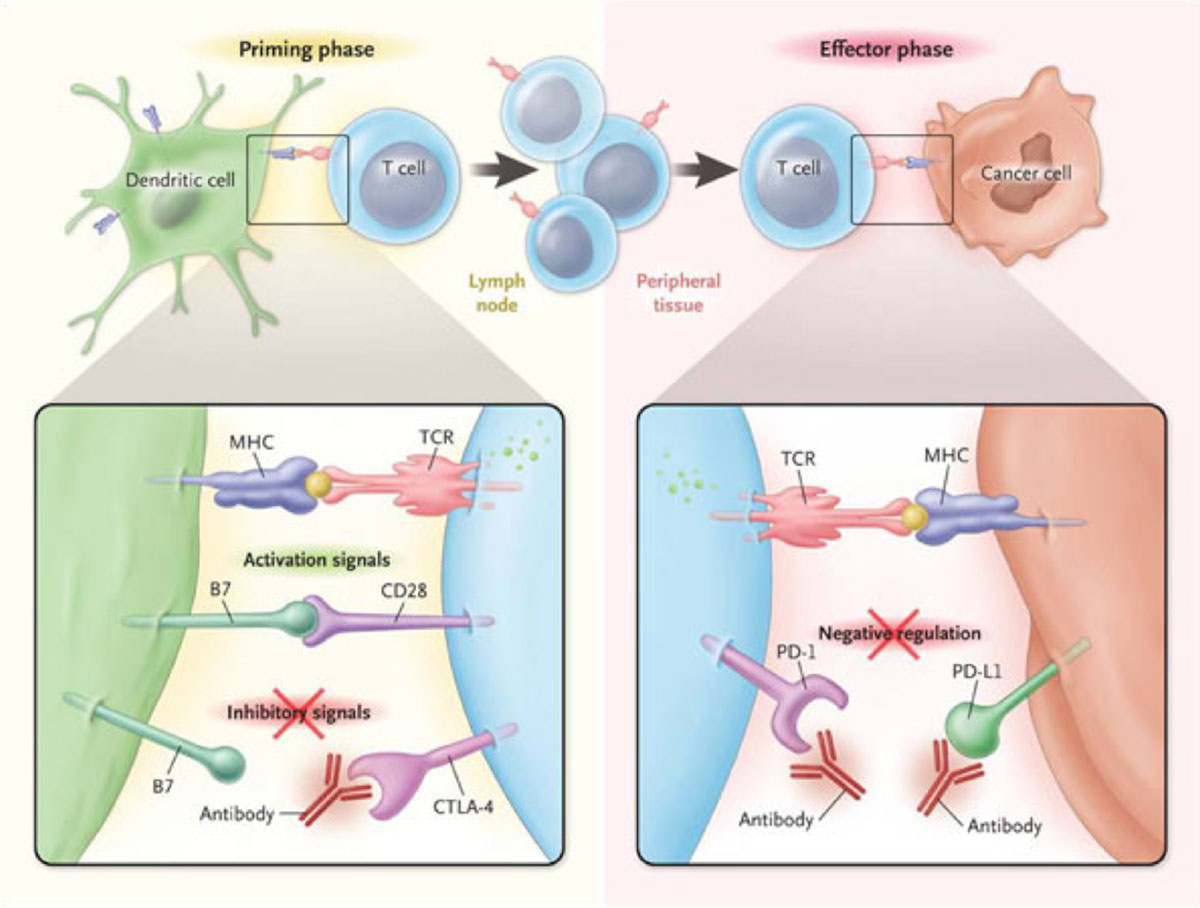Anti-PD-1 drugs are the latest and most exciting drugs in the battle against Melanoma and will revolutionise treatment. Anti-PD-1 monoclonal antibody is directed against the negative immunoregulatory human cell surface receptor PD-1 (programmed death 1). Anti-PD-1 human monoclonal antibody binds to and blocks the activation of PD-1, an immunoglobulin super family transmembrane protein, by its ligands PD-L1 and PD-L2, resulting in the activation of T-cells and cell-mediated immune responses against tumour cells or pathogens. Activated PD-1 negatively regulates T-cell activation and function through the suppression of P13k/Akt pathway activation. Thereby specifically blocking PD-1, the bodies’ immune system can kill tumour cells, as they are not switched off.
Anti-PD-1 treatment has revolutionized the management of melanoma, a type of skin cancer. Here’s a summary of its use in melanoma treatment:
- Significance: Melanoma is an aggressive form of skin cancer that can spread to other parts of the body. Standard treatments include surgery, chemotherapy, and targeted therapies. However, advanced melanoma can be challenging to treat.
- Mechanism: Anti-PD-1 drugs (such as pembrolizumab and nivolumab) block the interaction between the PD-1 receptor on immune cells and its ligands (PD-L1 and PD-L2) on cancer cells. This “releases the brakes” on the immune system, allowing it to recognize and attack melanoma cells.
- Clinical Success: Anti-PD-1 treatment has shown remarkable success in treating advanced melanoma. It has demonstrated durable and long-lasting responses in a significant subset of patients who were unresponsive to traditional therapies.
- Patient Selection: Biomarker testing, often including PD-L1 expression on tumor cells, is used to identify patients who are more likely to benefit from anti-PD-1 therapy. However, response is not solely determined by these biomarkers, and some patients with low or negative PD-L1 expression can still respond well.
- Combination Therapies: Anti-PD-1 drugs are sometimes used in combination with other treatments, such as anti-CTLA-4 drugs (ipilimumab), to enhance the immune response. This combination has shown improved response rates but can also lead to increased side effects.
- Side Effects: While anti-PD-1 treatments are generally well-tolerated, they can lead to immune-related adverse events. These can include skin rashes, gastrointestinal issues, and even inflammation of organs. Monitoring and managing side effects are crucial.
- Long-Term Benefits: Some patients have experienced long-term remissions and improved survival rates with anti-PD-1 treatment. These responses have led to a shift in the treatment paradigm for advanced melanoma.
- Ongoing Research: Researchers continue to investigate the optimal use of anti-PD-1 therapy, including its role in earlier stages of melanoma, its combination with other therapies, and ways to enhance its effectiveness.
- Patient Consultation: Decisions about using anti-PD-1 treatment for melanoma should be made in consultation with a healthcare provider. Individual patient factors, disease stage, and treatment history play a role in determining the best treatment approach.
In summary, anti-PD-1 treatment has had a profound impact on the management of advanced melanoma, providing new hope for patients who previously had limited treatment options. It has improved overall survival rates and quality of life for many individuals with this aggressive form of cancer.

